| << Chapter < Page | Chapter >> Page > |
Cycads – early land plants near Grahamstown:
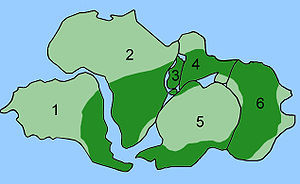
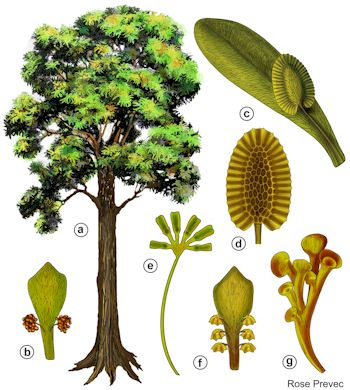
Near the end of the Palaeozoic Era, in the Permian period, Southern Africa had moved away from the South Pole. When the climate became warmer, the land becamecovered in new types of cone-bearing plants. The best known plant in the Southern hemisphere from that time is a tree called Glossopteris. Fossils ofGlossopteris tree trunks are common near Estcourt and Mooi River in Kwa-Zulu Natal. Plants like these formed the huge coal deposits that are mined in SouthAfrica today. The first true seed-bearing plants, which were simple conifers, appeared at the very end of the Permian Period.
Glossopteris and coal deposits:
Map of coal deposits in SA:
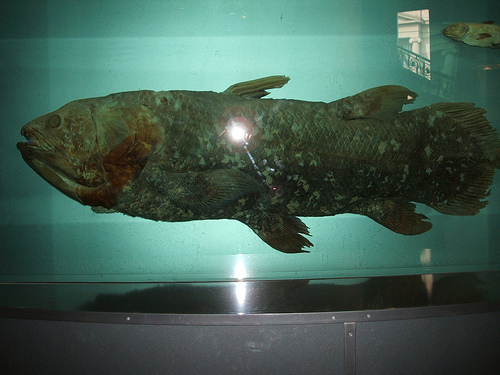
The coelacanth is a lobe-finned fish from the Permian Period that was once thought to be extinct and was only known as a fossil. In 1938, a South Africanfishing boat netted a large fish with deep blue scales and fins on short “legs”. Professor J.L.B. Smith recognised it as a fossil fish fromrocks up to 350 million years old. It was thought to have been extinct for at least 65 million years. A second coelacanth was found in 1952 in the ComoresIslands. Many have been found since then. Another population has also been found near Sodwana Bay on the Kwazulu-Natal north coast.
See article at
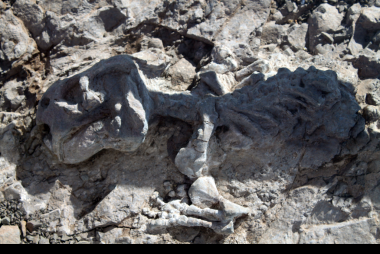
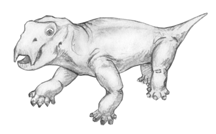
Reptiles diversified and spread as the most successful and largest land vertebrates in the Permian Period. One important group was reptiles with somemammal features that are called Therapsids. Thrinaxodon and Lystrosaurus were small therapsids that grew to about 50cm long. Fossils of these mammal-likereptiles have been found in the Karoo. These animals are seen as transitional between reptiles and mammals. They have several developmental advances such asextra ear bones and a bony palate, which are not normally found in reptiles.
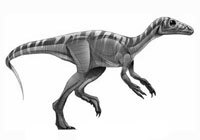
The special type of reptile called a dinosaur appeared and spread during the Triassic Period of the Mesozoic Era. A South African example of a dinosaur isEuskelosaurus browni. It was one of the first dinosaurs discovered in Africa. It lived in the area now called the Eastern Cape and fossils have been foundnear Ladybrand.
One of the best places in the whole world to look for dinosaur fossils is the sedimentary rocks of the Drakensberg Mountains and Maluti Mountains of southernAfrica.
Fossils of ferns and cone-bearing plants have also been found in the same areas as the dinosaurs.
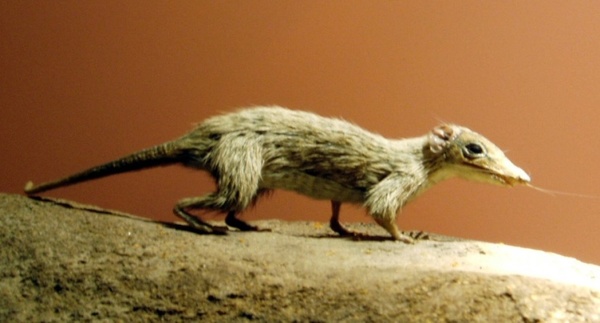
The first true mammals appeared during the Jurassic Period of the Mesozoic Era. They were small, about the size of a mouse and lived side by side with thedinosaurs. South Africa is the only place in the world where there are fossils that show changes from the earliest Therapsid (mammal-like) reptiles from theKaroo rocks of the Permian Period to the first true mammals from the Drakensberg rocks in the Eastern Cape and Lesotho.
Early mammal evolution: Interactive site
Discovery of early Hominids in SA:
The Hominids are the “human-like” organisms that diversified from the apes. The apes lived in tropical forests, while the hominids lived inwoodlands and savannah. About 4mya, several different species of Hominids with large brains appeared in Africa. These prehumans are in the genusAustralopithecus. The modern human Homo sapiens appeared in Africa about 200 000 years ago and spread all around the Earth. Many people believethat the eastern side of Africa and South Africa are the original home of humans. The Cradle of Humankind at Sterkfontein and Kromdraai has yielded someof the most exciting and oldest hominid fossils in the world.
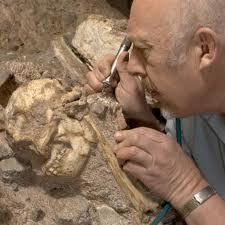
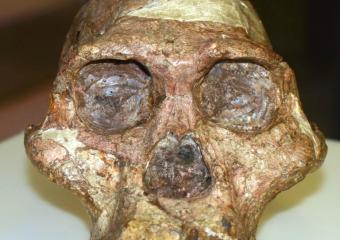
The text on the following pages describes some of the key events in Life’s History for which there is evidence in Southern Africa.
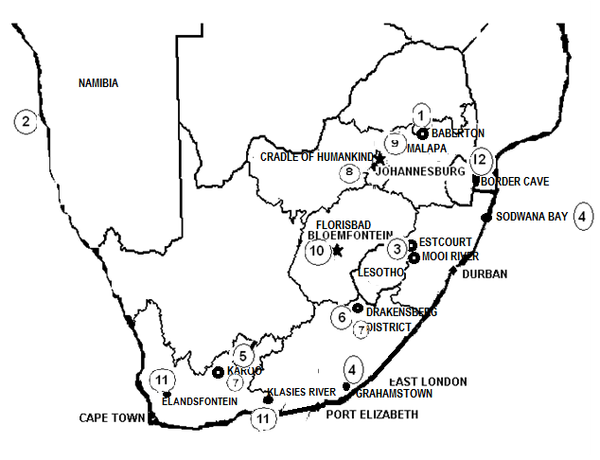

Notification Switch
Would you like to follow the 'Siyavula: life sciences grade 10' conversation and receive update notifications?